
It’s true. Gooseberries taste like sour grapes when consumed raw.
Yet, when fully ripe, they take on a range of flavors from grapes crossed with plums to Muscat wine-inspired balls of surprising and refreshing tartness.
What’s not to love about that? Especially if you are into trying out things that demand to come back into popularity once again.
While gooseberries are quite common in Europe, they have long fallen out of fashion in the US.
Not because they aren’t tasty (gooseberries are absolutely mouthwatering delicious), but in the early 1900s, a federal ban in the States restricted the planting of gooseberries. This was due to the berries being an intermediary host for white pine blister rust.
Luckily, times have changed and growing restrictions have mostly been lifted. So, before planting this potentially “forbidden fruit“, make sure to check with your local extension office to see if planting gooseberries or currants, both in the Ribes genus, is right for you. Currently, there are only a few states on the list where growing gooseberries and/or currants is out of question.
That being said, there are white pine blister rust resistant varieties. It is always useful to talk with your local nursery to find out more.
Or you could always plant more raspberries and blackberries to up your backyard fruit production instead.
What are gooseberries and why should you plant them in your garden?
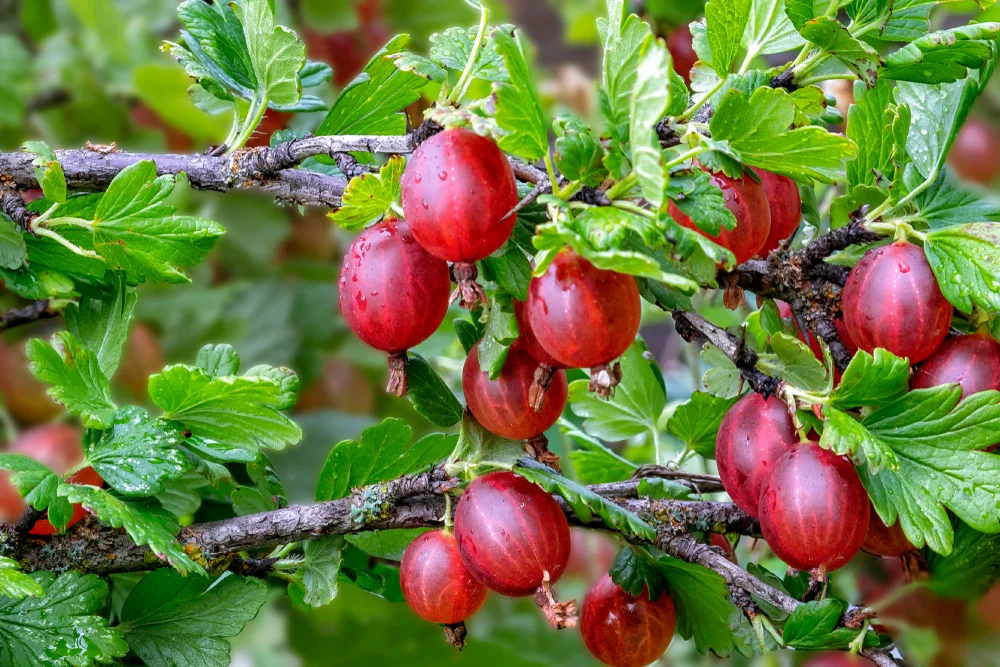
The gooseberries you often find at the market are ripe and deliciously tart when green, though that isn’t the only variety. You’ll also find red and purplish ones too, that are perhaps a bit on the sweeter side. As mentioned, they are akin to grapes. Except for the fact that you harvest them one-by-one, not by the entire bunch.
And I am quite sure that gooseberry juice would not be as fantastic as a glass of homemade grape juice.
Growing conditions-wise, gooseberries are better suited to northern climates, growing zones 3-8, as they don’t tolerate intense heat and overly dry weather. If you have sunny spot to dedicate to them, you can eat gooseberries for years to come.
Benefits of growing gooseberries
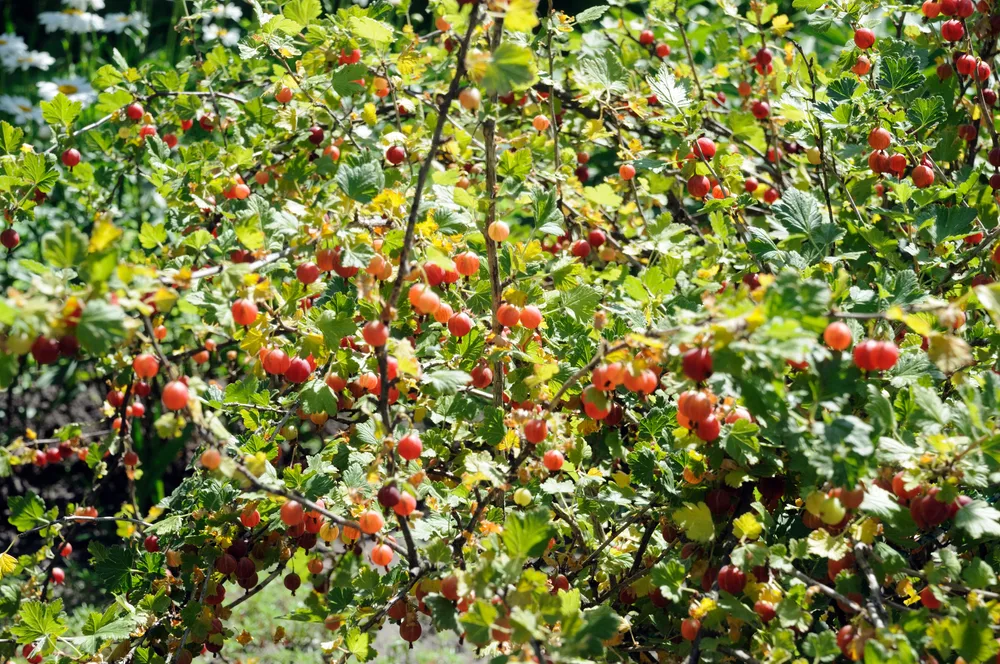
First things first: you’ll want to grow gooseberries because they are perennials.
The more perennials you can fit into your garden, the more self-reliant you will become. It goes without saying: the more you grow, the less you have to buy. As you learn more ways to preserve your harvests, a fully stocked pantry becomes not only a dream, but a reality.
It has been noted that gooseberry bushes produce anywhere from 20 years, all the way up to 40. Now that certainly won’t outlive an apple tree which can produce for nearly a century, or grapes that can surpass our own wildest expectations. But a few decades of picking berries off the same bush? Any gardener can get behind that.
Plus, gooseberries are self-pollinating. Which means you only need to plant one bush. Though three or more always make for a more generous gooseberry pie.
Benefits of eating gooseberries
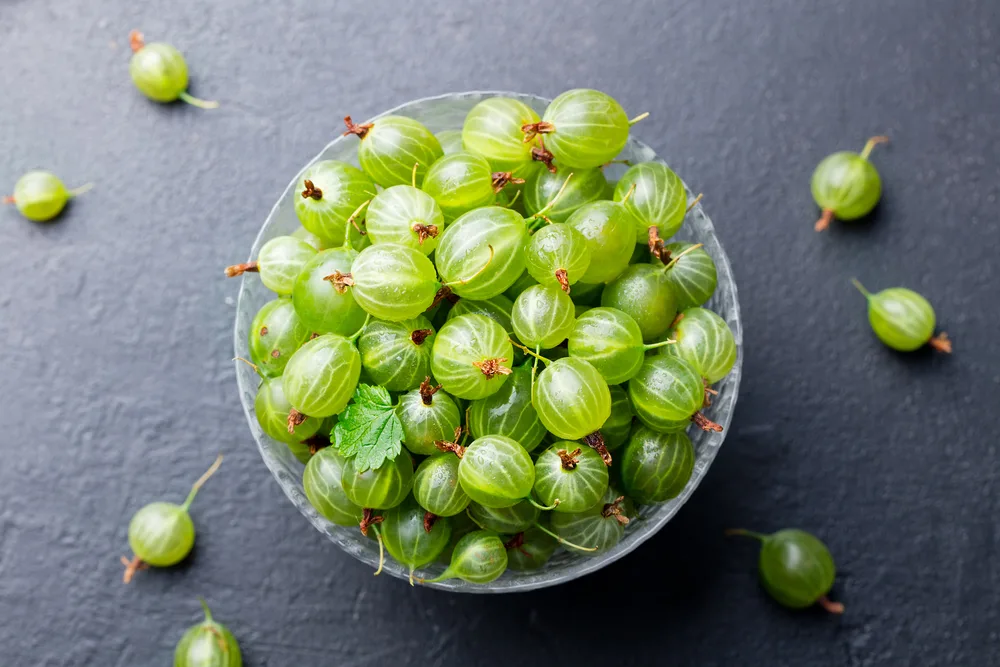
If you find that gooseberries are hard to come by, the best way to get yourself a healthy bowlful, is to grow them yourself. This way, you can stay healthy from the food you organically grow.
Nowadays you might find yourself taking vitamins to make up for the decreased mineral and vitamin content of the food that is mass-produced.
1 cup of gooseberries can provide your body with 46% of your recommended daily dose of vitamin C.
Gooseberries also contain vitamins B5, B6, copper, manganese and potassium.
Now you know that gooseberries are beyond good for your body, let’s look at how to plant and grow them.
Bare-root planting of gooseberry bushes (Step-by-step, with pictures)
When searching for bare-root plant stock, it is useful to know exactly what you are after.
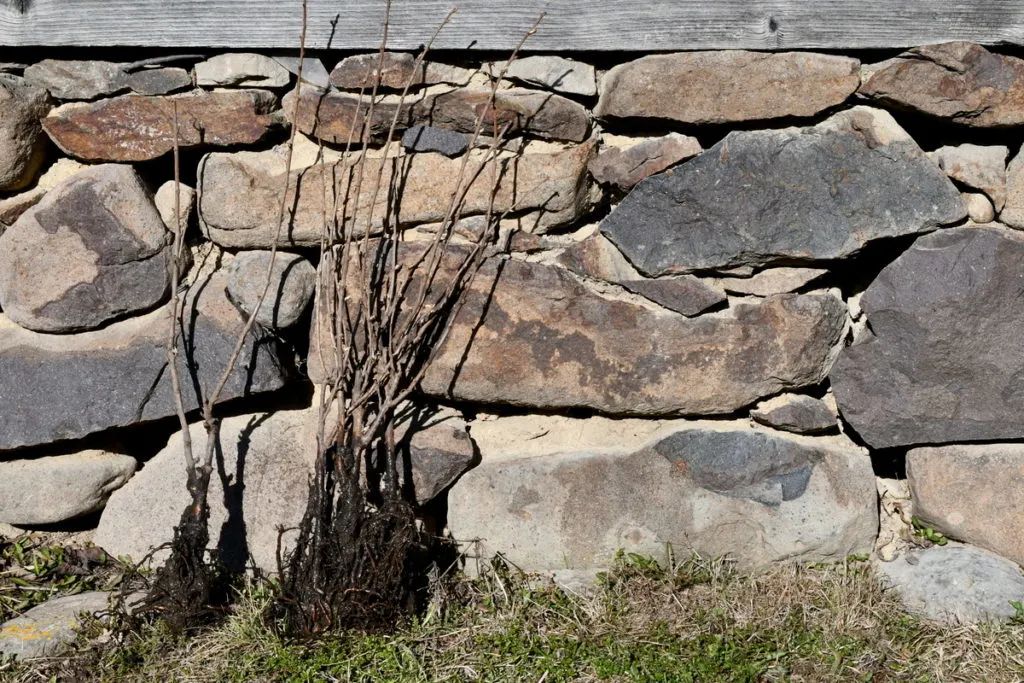
Depending on your growing location, choose your gooseberry bushes accordingly.
Ribes uva-crispa is the European gooseberry which is native to the Caucasus Mountains.
Ribes hirtellum is the American gooseberry which is native to Canada and the northern United States.
Keep in mind that a mature gooseberry bush will take up considerable space, spreading its branches to 5 feet and growing up to about 6 feet tall. With that, let’s get planting!
Should I soak bare-root plants before planting?
Absolutely, yes you should.
In fact, with any bare-root stock, you should be soaking the roots before planting. After all, you never know how long those trees and shrubs have been out of the soil. Hopefully for only a couple of days, though it could have been a week or more.
If they were not well watered in the meantime, or covered with a wet sawdust, they will be quite thirsty and in need of some freshwater reserves. Set them in a bucket about 24 hours before planting, if you have the time, but at least 6 hours, for them to absorb what they need.
1. Prune your bare-root plants
When you purchase bare-root plants from a nursery, you must realize how many times the plants are handled before they make it to your garden.
In the process of planting, pruning and getting dug up for sale, each plant will pass through many hands. Branches may get broken, the roots may grow sideways and, in general, the plant just can’t wait to get back in the ground.
Before you plant, however, it is always a good idea to prune any broken branches first. This way you can better observe the structure of the plant.
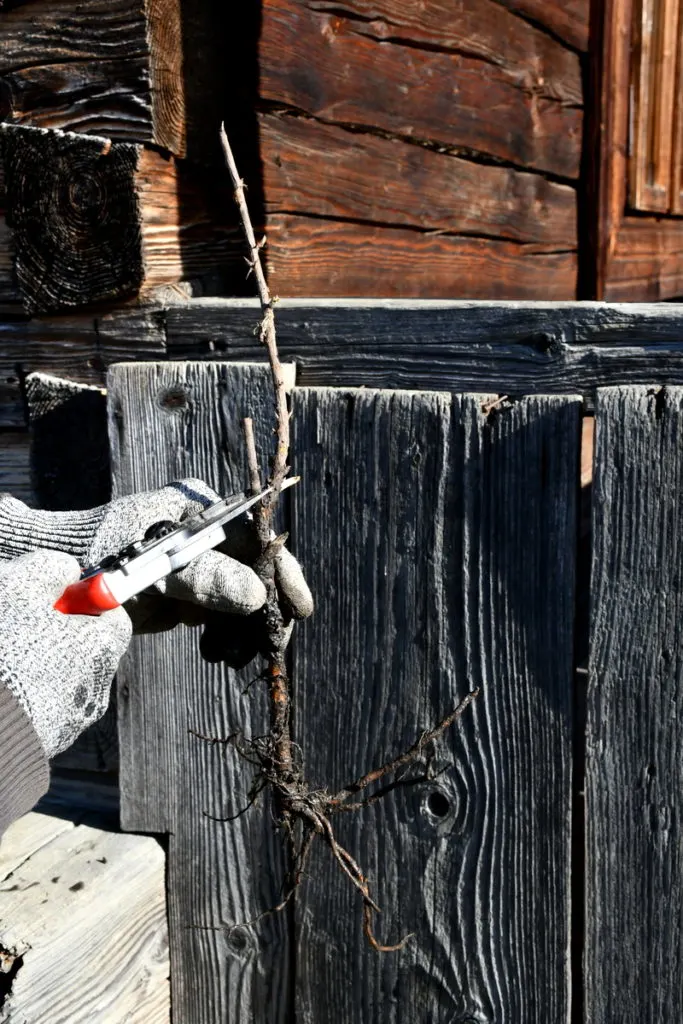
Next, you’ll want to focus your attention on the roots.
In the case of a plant/tree having a tap root, you should keep as much of that intact, as possible. With gooseberries, you can go right ahead and clip off any roots that stick out too far to the side, as well as remove those roots that tend to stick upwards.
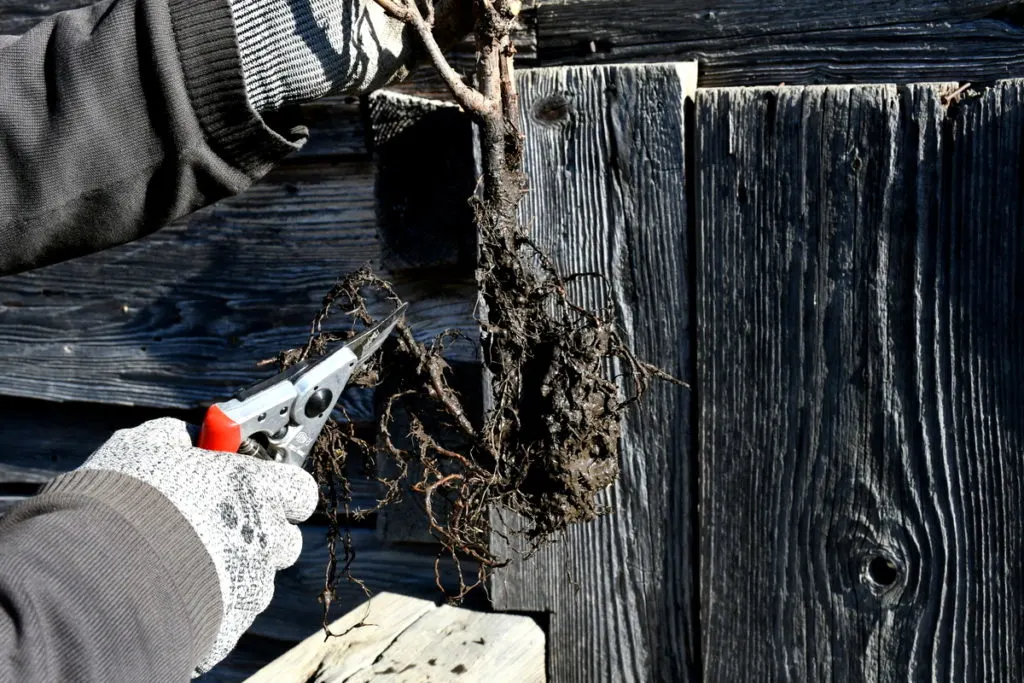
2. Choose a location to plant your gooseberries
Once you have your pruned bare-root stock at hand, it is time to choose a location to plant them in.
The ideal area should be mostly sunny with well-draining soil. If they receive some partial afternoon shade, they’ll love that too.
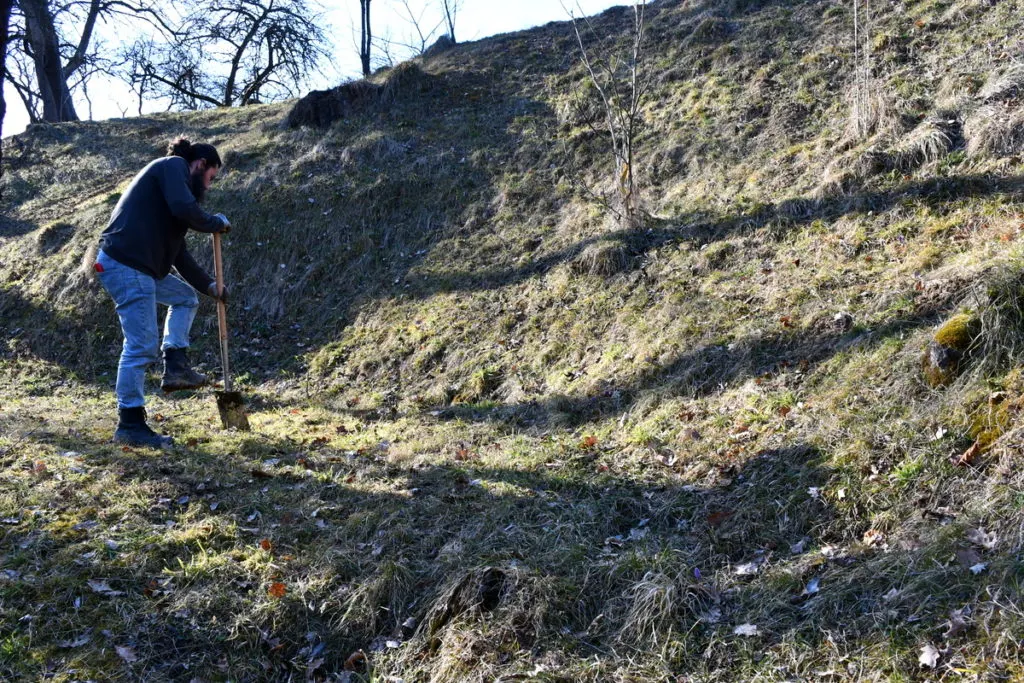
Gooseberries will naturally grow into a bush form (some have thorns, others do not), and some can be trained if necessary.
If you are really limited on space, gooseberries can also be grown in containers.
How do you know when to plant, or transplant, gooseberries?
Both bare-root and container grown gooseberries can be planted anytime in their dormancy: winter through early spring. As long as the soil is not frozen, gooseberries can be planted.
3. Dig a hole
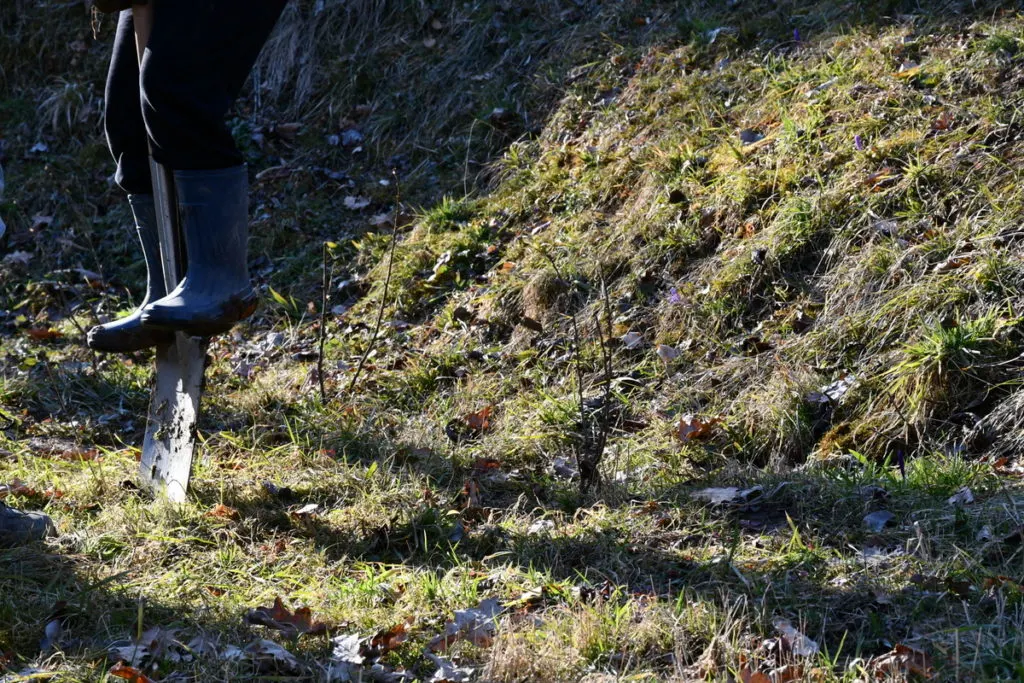
It goes without saying to grab your spade and dig down into the soil. But just how deep?
Dig down a few inches deeper than it takes for the gooseberry bush to sit flush with the ground (the part right above the root system and below its lowest branches).
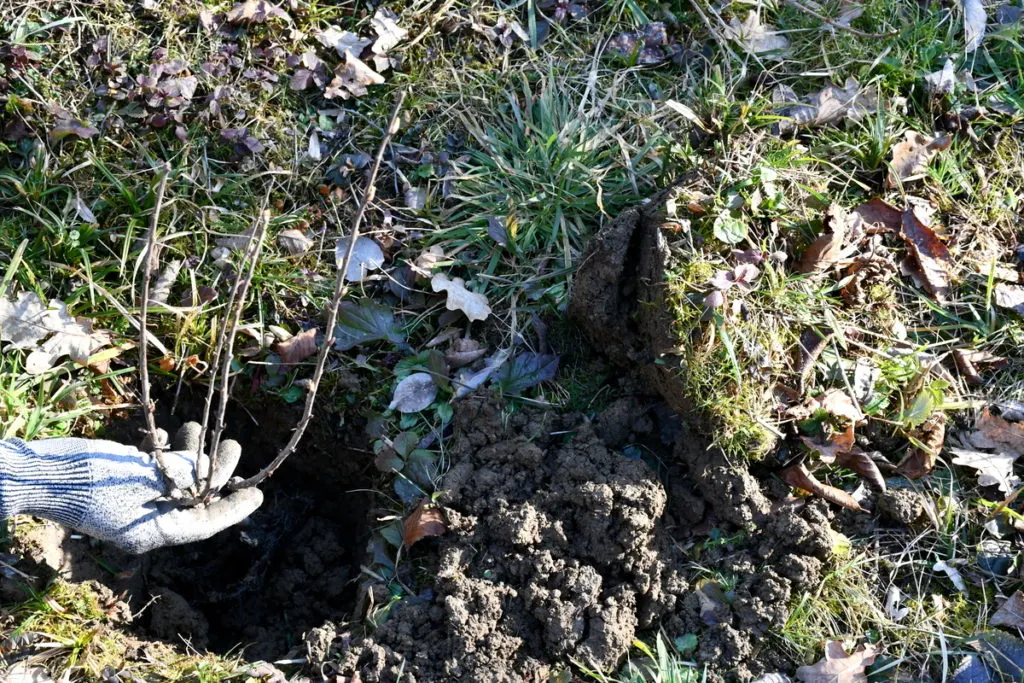
4. Plant your bare-root stock
Loosen the soil under the roots. Then add a small spadeful of compost or well-rotted manure if your soil is lacking in nutrients.
Make sure to space your gooseberry bushes far enough apart. 3-4′ is sufficient for most varieties. Staggering the bushes in two rows helps you to fit more fruit into a smaller space.
5. Fill hole back in and tamp the soil down
Break up the soil that you removed from the earth with the spade and leave the top grassy part intact. Not everyone agrees with the last part, though we have been doing this for decades with successful results.
If you were careful enough to dig a circle, you will end up with a disc of grass. Slice this disc halfway through (along the radius) and you will be able to slip it around the newly planted bush.
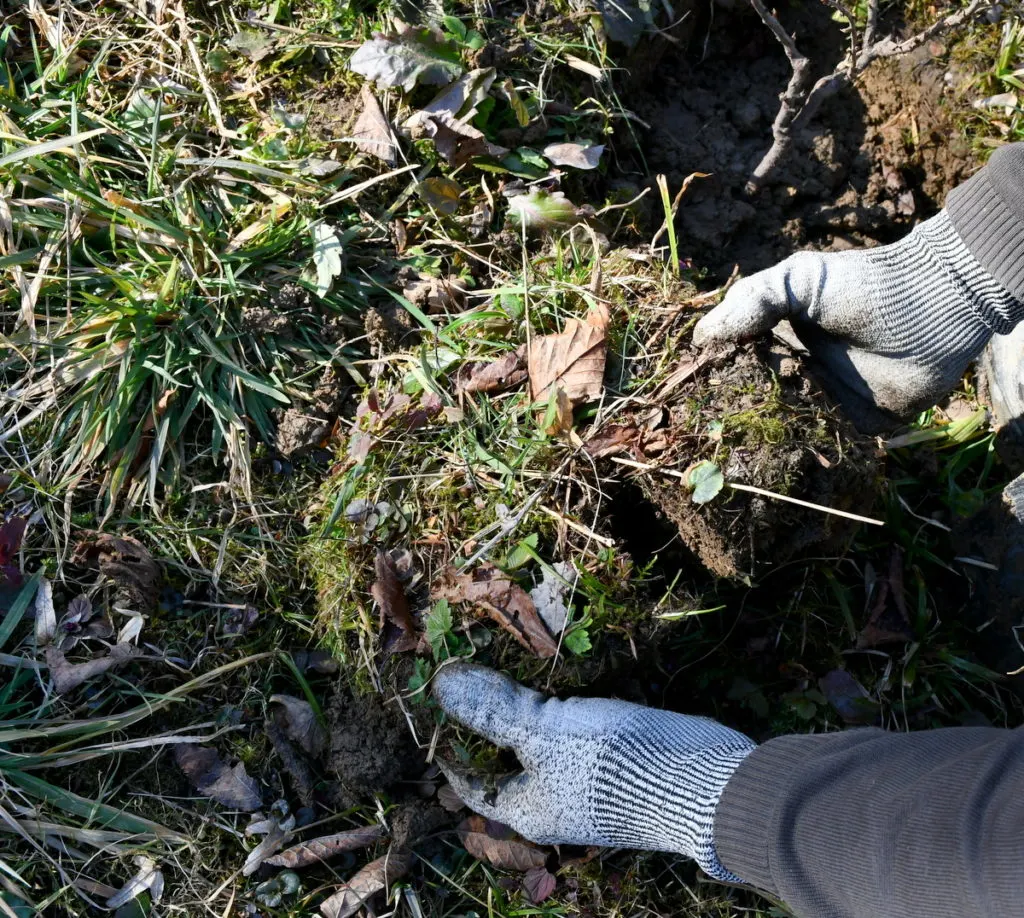
This covers the ground, preventing new weeds from emerging.
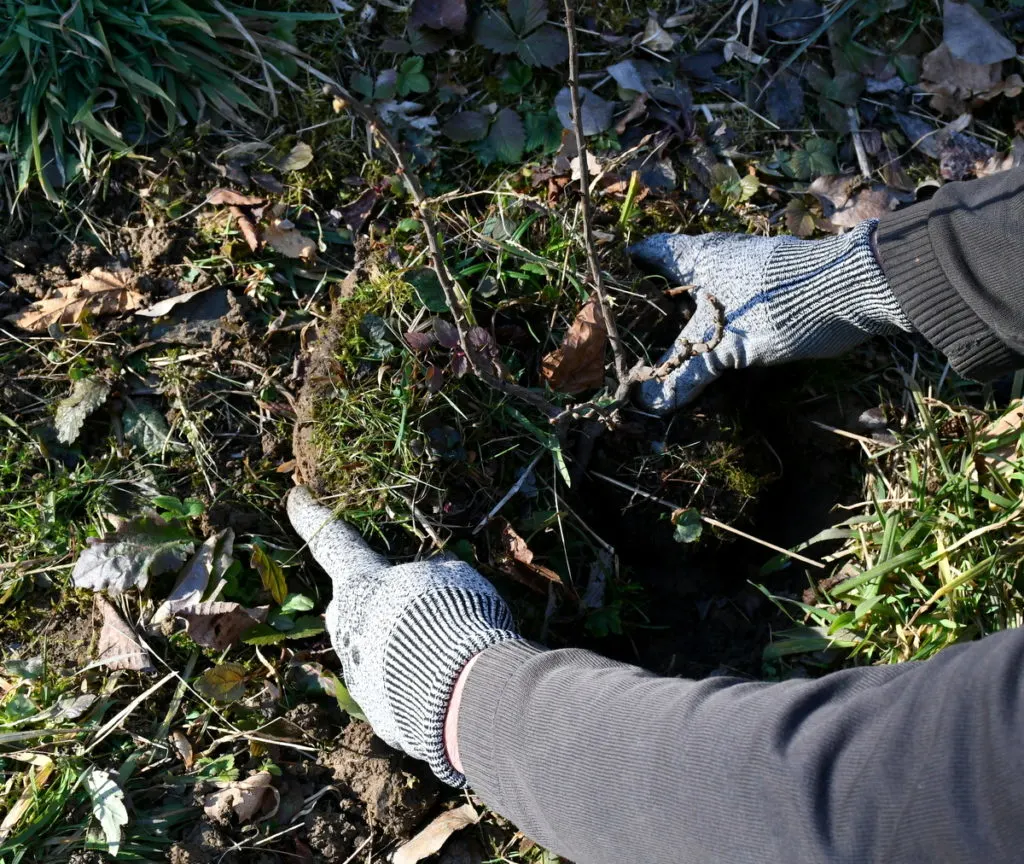
Sure it will be grassy, but a pair of clippers, a sickle or a hand scythe, cuts the grass down nicely.
Before you leave the planting scene, be sure to tamp down the soil around the base of the bush. This last step helps to anchor the roots. It also prevents “air gaps” that when left in the soil, can dry out the roots.
6. Add mulch around base of bush
To mulch or not to mulch is often the question.
If you have a fenced-in yard, go ahead and do it now.
However if your yard is a wild and free space where deer, fox and boar might roam, it is best not to draw their attention to free food. Our gooseberries will wait with mulch until they absolutely need it.
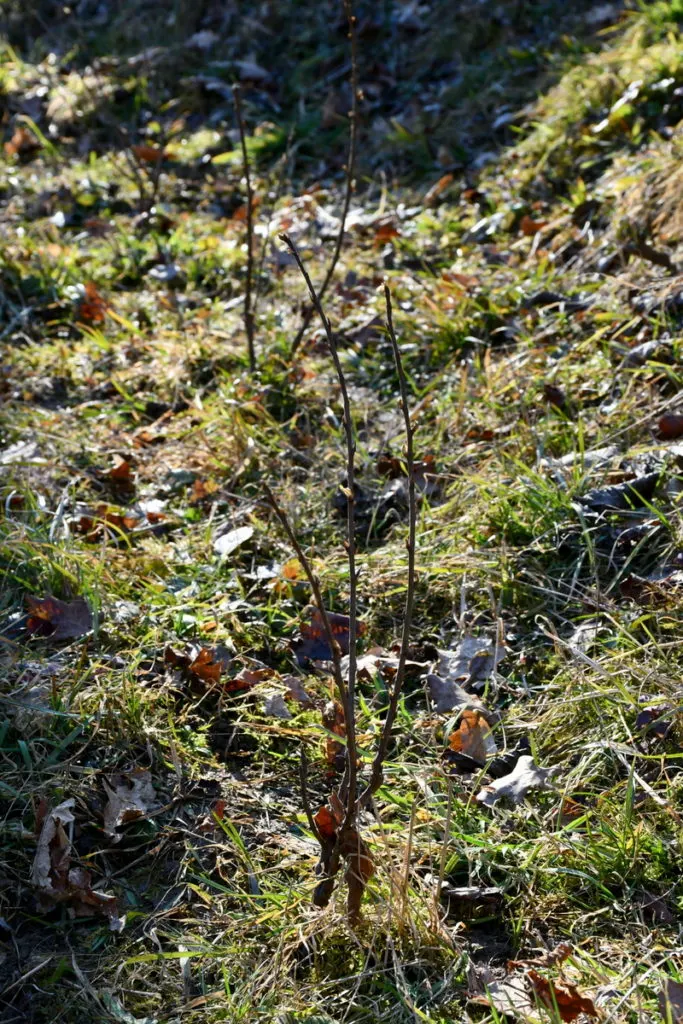
Caring for gooseberries
A few years down the line, you will have to start pruning your gooseberries.
For the time being, give them space to grow and see what kind of branching structure they want to produce. As with planting, pruning of gooseberries should be done in the winter months when the bush is dormant.
When you get to that pruning stage, it is best to remove dead wood as you prevent branches from becoming overcrowded. To keep your gooseberry bushes productive, it is recommended to prune the previous season’s growth by half.
Be sure to make all cuts just above an outward facing bud and, as usual, slanting away from the chosen bud. This will encourage the bush to open up; which allows for air circulation as it decreases chance for disease.
Harvesting gooseberries
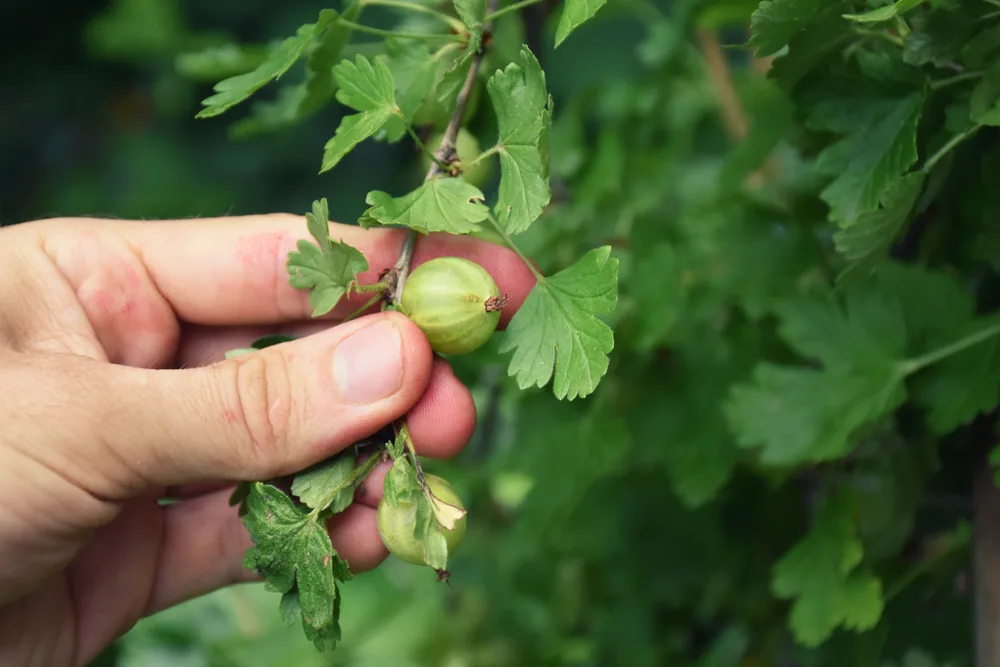
If you are planting bare-root, or container-grown, gooseberries this season, know that you will have to wait anywhere from 2 to 5 years for your first full harvest.
You can expect this with just about any perennial tree or shrub, so it shouldn’t come as a surprise for you.
If you get into the habit of planting one new bush or fruit tree each winter/early spring, then you will always be ready for a new harvest.
When birds start stealing your gooseberries, you know they are almost ready to eat.
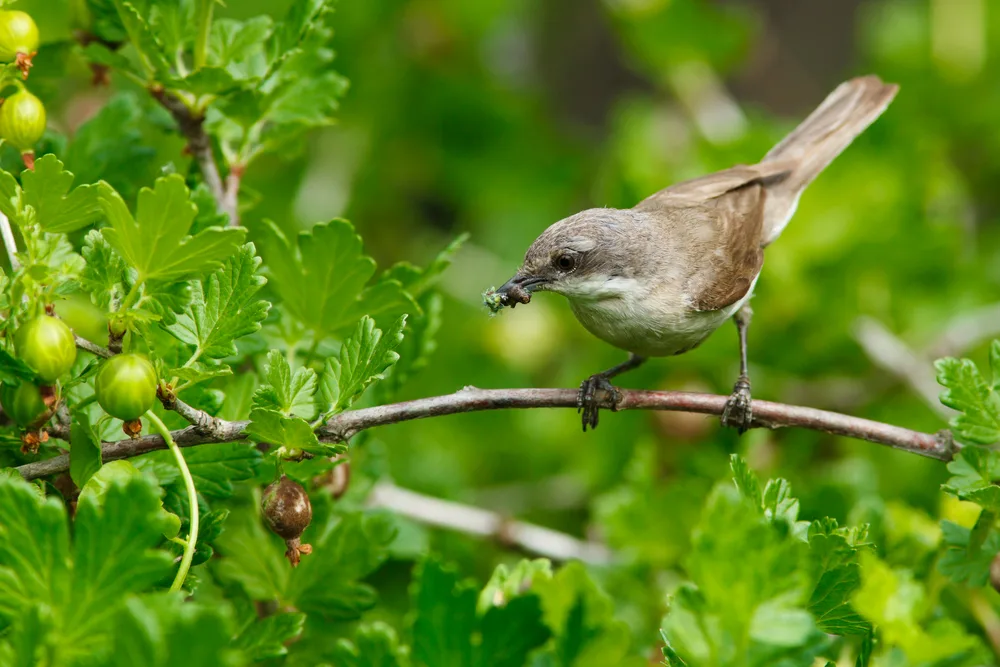
Missing berries are a good indicator that harvest time is near. If the birds are getting to them before you, the bushes may need to be covered with a cloth or netting. Perhaps you just need to plant enough for everybody, provided you have the backyard space.
Picking time for gooseberries comes in mid-summer and lasts 4-6 weeks. What a joyous time it is!
You can harvest some berries when they are unripe and slightly firm, saving the best of these underripe ones for preserves.
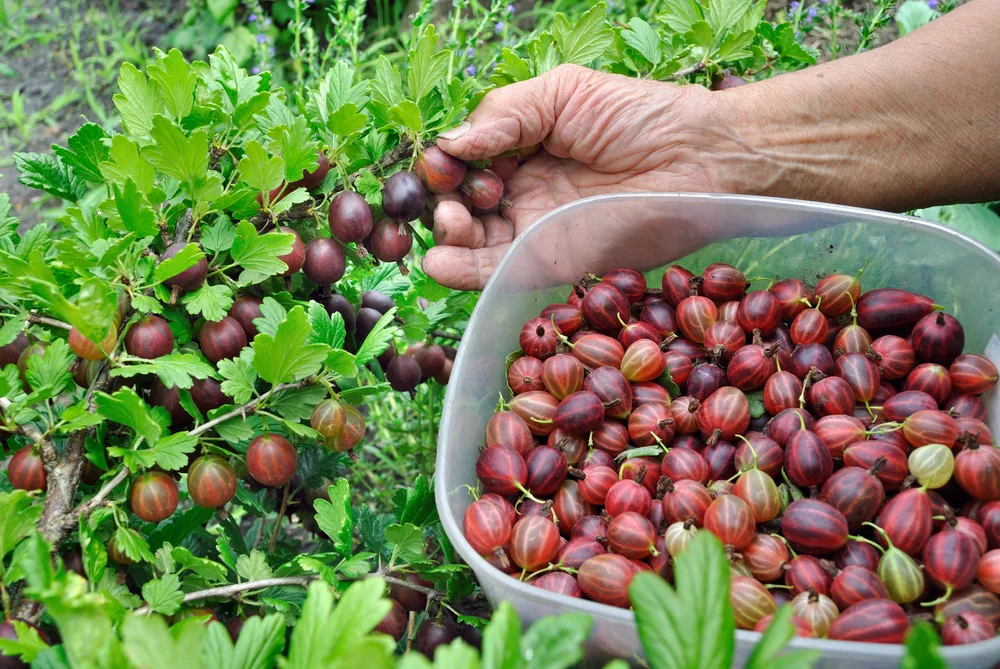
Gooseberries don’t ripen all at once.
The ripest ones are best for fresh eating. Depending on the variety of gooseberries you have planted, they may turn reddish, pink, white, yellow or green. The best way to tell when they are ready, is to taste them – fresh from the bush.
You can also gently squeeze a few and see how much they give under pressure. European gooseberries tend to be larger than American ones, but flavor-wise are nearly the same.
Gooseberries do have small thorns, which are generally not a problem as you carefully pick them one by one. You can harvest with thin leather gloves if need be.
Inspiration for eating your homegrown gooseberries
Once your tart and juicy gooseberries are starting to grow, how will you be utilizing them?
It is an important question to ask yourself before they ripen, as you will be picking them both ripe and unripe.
Since gooseberries aren’t to be harvested all at once, it may be hard to collect enough for canning and preserving.
However, gooseberries can easily be frozen for later use. That is the simplest way to take care of gooseberries as you harvest weekly.
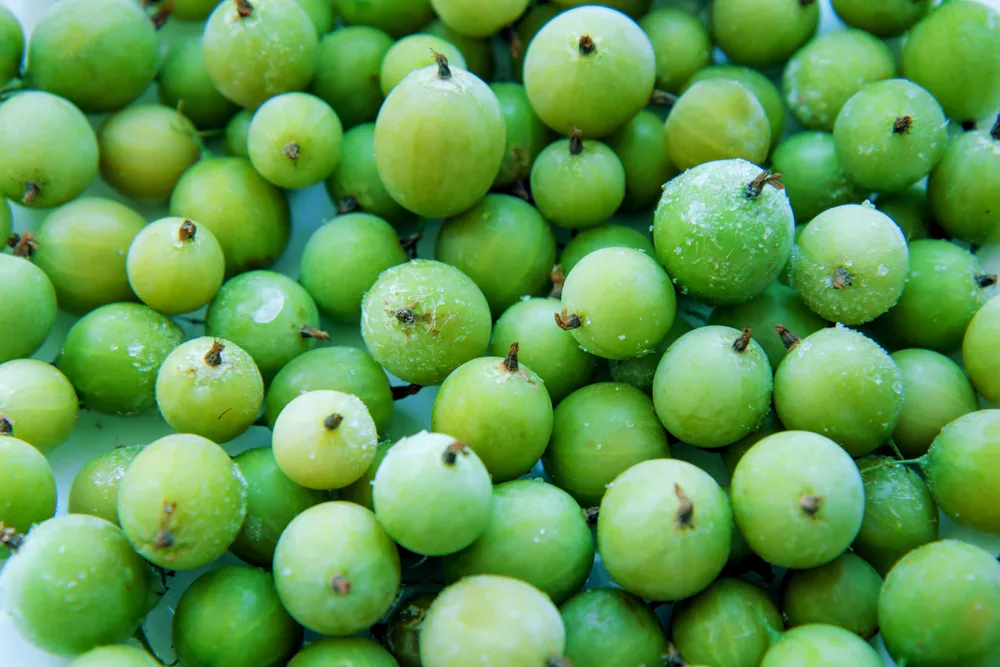
Gobbling up your gooseberries
You probably won’t be reaching for fresh handfuls of gooseberries, as opposed to raspberries. But let me tell you that gooseberry jam is really something to strive for. My mouth is watering right now. Read through the recipe and yours will be too.
You could also make some posh gooseberry and gin jam, taking your home canning skills up a notch.
Make pickled gooseberries, toss some gooseberries into your smoked mackerel salad, whip up a gooseberry and elderflower jam, bake a gooseberry and custard pie, or preserve a sweet-tart gooseberry compote.
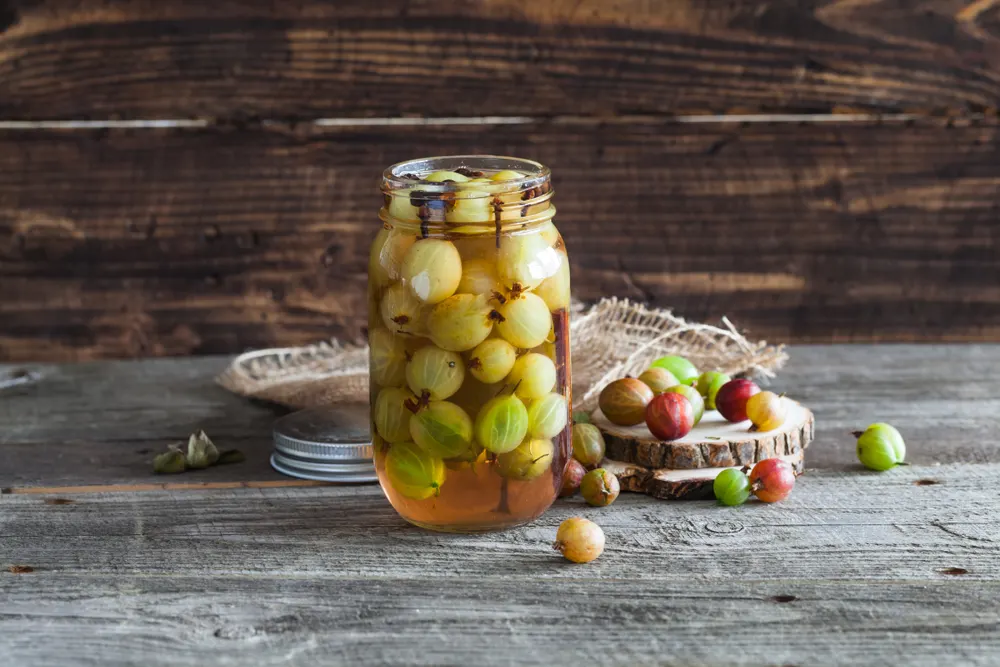
Reading through the recipes, you will find that gooseberries are mostly cooked for the convenience of adding sugar or other sweeteners to tame their tart side. However, it is often asked:
Can I eat gooseberries raw?
Yes. Consuming gooseberries raw is the absolute best way to supercharge yourself with all the vitamins and nutrients they have to offer. You know that lemon water is good for you, no matter how sour it is. Gooseberries are the same.
The sooner you are tempted to pluck them from the bush, the more sour they will be. So, just sit back or tend to your vegetable garden to keep you busy. Then harvest your gooseberries when they are fully ripe.
At that time you can freeze gooseberries for later use, make pies and jams galore.

Get the famous Rural Sprout newsletter delivered to your inbox.
Including Sunday musings from our editor, Tracey, as well as “What’s Up Wednesday” our roundup of what’s in season and new article updates and alerts.

